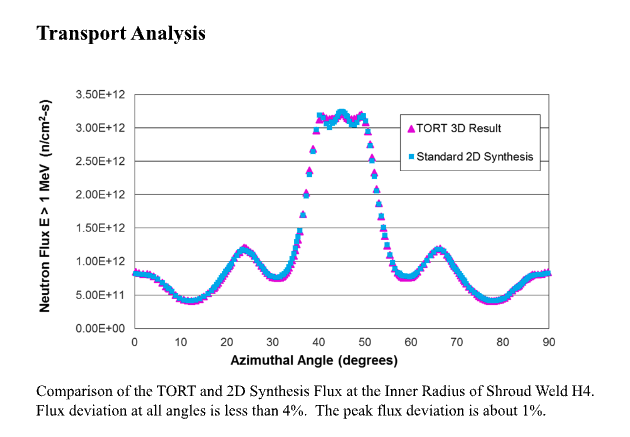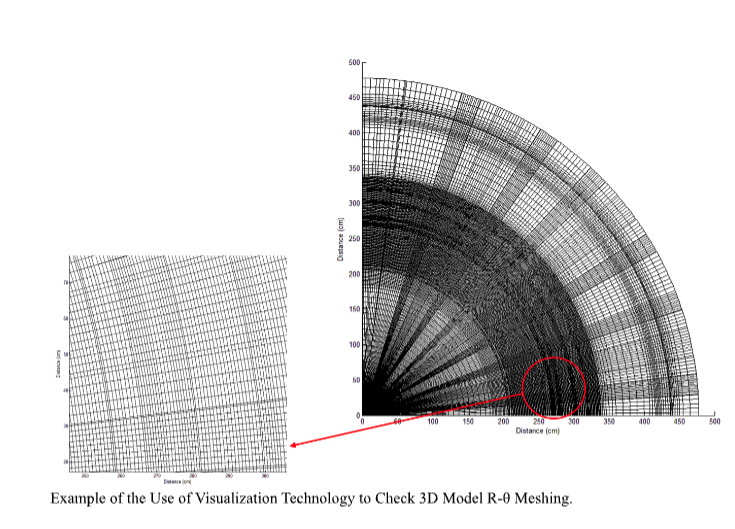Neutron transport analysis
Neutron transport analysis is essential for maintaining and assessing the integrity of a reactor pressure vessel. We conduct detailed neutron transport analysis to measure neutron fluence on surveillance capsules and critical reactor components. These capsules, equipped with neutron dosimeters and mechanical property test specimens, are periodically retrieved to evaluate the impact of neutron radiation on pressure vessel materials.
Our proficiency in neutron transport analysis demonstrates our commitment to enhancing nuclear safety and operational efficiency. We provide accurate, reliable data that supports the nuclear industry's efforts to ensure safe reactor operations. Our methodologies adhere strictly to all regulatory standards, instilling confidence in our clients about the ongoing safety and reliability of their nuclear facilities.
Application of neutron transport analysis
Our neutron transport analysis is crucial for evaluating surveillance capsules and for assessing other critical components within the reactor, such as BWR shrouds and PWR vessel internal components. Understanding the neutron fluence helps in predicting material behavior under radiation, assessing component lifespan, and ensuring the continued safe operation of the reactor. This analysis allows us to compare the empirical results from dosimetry measurements with theoretical predictions, ensuring that the nuclear plant operates within safe and efficient parameters.
Transport model description
MPM’s capabilities extend to calculating neutron transport across a wide range of geometries pertinent to nuclear reactors. For standard analysis, particularly in regions within the reactor beltline, we employ the discrete ordinates method (SN method) using the DORT code. This code is favored for its ease of use, rapid computation, and established acceptance by the Nuclear Regulatory Commission (NRC). Our use of the latest cross-section libraries ensures that our calculations meet the stringent requirements of the NRC Regulatory Guide 1.190, titled "Calculational and Dosimetry Methods for Determining Pressure Vessel Neutron Fluence."
In more complex scenarios, where a three-dimensional perspective is necessary to capture the nuances of neutron interactions and distributions, MPM is equipped to perform advanced discrete ordinates or Monte Carlo transport calculations. These methods provide a more detailed analysis, suitable for intricate reactor geometries and more challenging radiation environments.


